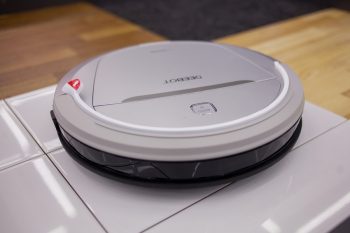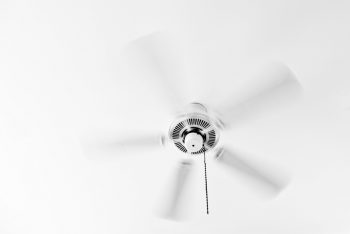
Whether it’s a constant thump, a rhythmic squeak, or a disturbing clatter, a noisy dryer can be not only annoying but also a sign that something is wrong with your appliance. Fortunately, many of these issues can be resolved with some troubleshooting and DIY repairs. In this comprehensive guide, we’ll explore how to fix a noisy dryer, detailing the causes of common noises, how to diagnose them, and how to resolve the issues.
To fix a noisy dryer, first diagnose the source of the noise. It could be due to worn-out drum rollers and axles, a faulty drive belt, a worn drum bearing, a blocked or loose blower wheel, or a defective motor. Once you’ve identified the source, you may need to replace the worn-out or defective parts. This may involve disassembling the dryer and replacing the faulty component. If you’re not comfortable doing this yourself, consider hiring a professional.
Common Causes of a Noisy Dryer
- Worn-out Drum Rollers and Axles: Drum rollers and axles support the dryer drum as it turns. When they become damaged or worn out, they can cause squeaky or thumping noises.
- Drive Belt Issues: The drive belt wraps around the drum, idler pulley, and drive motor to rotate the drum. A worn-out or damaged belt can cause a thumping noise when the drum is turning.
- Faulty Drum Bearing: Some dryers use a bearing to support the back of the drum. A worn bearing can cause squeaking or squealing noises.
- Blocked or Loose Blower Wheel: A loose or blocked blower wheel can cause a rumbling noise in the dryer.
- Defective Motor: A defective motor can produce various sounds, such as rattling from a loose pulley, high-pitched noise from a bad bearing or bushing, or humming noise from a bad winding or switch.
Diagnosing the Noise in Your Dryer
Before you can fix the noise, you need to identify its cause. Here’s a step-by-step guide on how to diagnose the source of the noise:
- Unplug the Dryer: Always unplug the dryer before inspecting or disassembling it to avoid the risk of electrocution.
- Check for Loose Items: Open the dryer door and inspect the drum for any loose items like coins or keys that might be causing the noise.
- Ensure the Dryer is Level: Use a spirit level to check if the dryer is level on both the top front edge and top side edge. An unlevel dryer can result in noisy operation as the drum rotates.
- Inspect the Drum Rollers and Axles: Worn-out or damaged drum rollers and axles can cause squeaky or thumping noises. The rollers support the dryer drum as it turns, and the axles allow the rollers to spin.
- Examine the Drive Belt: The drive belt wraps around the drum, an idler pulley, and a drive motor pulley to rotate the drum. A worn-out or damaged belt can cause the dryer to be noisy when the drum is turning.
- Check the Motor: A defective motor can produce various sounds, such as rattling from a loose pulley, high-pitched noise from a bad bearing or bushing, or humming noise from a bad winding or switch.
- Inspect the Blower Wheel: If you hear a loud rumbling noise, the blower wheel might be responsible. This component circulates air in the drum.
Fixing a Noisy Dryer
Once you’ve identified the source of the noise, you can begin to fix it. Here’s a step-by-step guide on how to fix a noisy dryer:
- Replace Worn-Out Drum Rollers and Axles: If the drum rollers and axles are worn out, they will need to be replaced. This process involves disassembling the dryer, removing the drum, and replacing the rollers and axles.
- Replace the Drive Belt: If the drive belt is worn out or damaged, it will need to be replaced. This involves removing the dryer’s front panel and drum to access the belt.
- Clean or Replace the Blower Wheel: If the blower wheel is dirty or loose, it should be cleaned or replaced. This involves removing the dryer’s rear panel and cleaning or replacing the blower wheel.
- Replace the Drum Bearing: If the drum bearing is worn out, it will need to be replaced. This can be a complex process and may require professional assistance.
- Replace the Motor: If the motor is defective, it will need to be replaced. This is a complex repair and should be performed by a professional.
In conclusion, a noisy dryer can be a nuisance and a sign of potential issues. However, with the right knowledge and tools, you can diagnose and fix the problem. Always remember to prioritize safety when attempting any repairs, and if you’re unsure or uncomfortable performing any of these steps, don’t hesitate to call a professional. Regular maintenance and prompt attention to any noise issues can extend the life of your dryer and keep it running smoothly.
Frequently Asked Questions
How often should I check my dryer for potential issues causing noise?
You should inspect your dryer for potential issues if you notice any unusual noises. However, for preventative maintenance, it’s good practice to check it every 6-12 months.
What tools will I need to fix a noisy dryer?
The tools required may vary depending on the issue, but commonly used items include a screwdriver, socket set, needle-nose pliers, and a putty knife. Always check your dryer’s manual for specific tools needed.
Can I lubricate the drum rollers and axles instead of replacing them?
Lubricating the drum rollers and axles can sometimes reduce noise, but this is typically a temporary solution. If they are worn out, it’s best to replace them to prevent further damage to the dryer.
How can I tell if the dryer motor is defective?
A defective motor often produces unusual noises such as rattling, high-pitched squealing, or humming. However, diagnosing a motor issue usually requires a professional as it involves complex electrical testing.
What if my dryer is still noisy after following these steps?
If your dryer is still noisy after following these steps, it’s best to call a professional. Some issues, such as problems with the timer or the electronic control board, require professional diagnosis and repair.












